Long Haul Batteries
Lithiums offer the longest illumination time with a sustained output, but when they die, they go quickly so be sure you have spares if you’re relying on lithium for a multi-day trip. Another benefit of lithiums is their cold weather performance. With alkaline batteries there is a bit of water in the electrochemical soup where the charge is stored. Thus, in cold temperatures the movement of electrons is reduced. By contrast the chemical composition of the lithium batteries is void of water, so it maintains good electron flow down to -40°F.
Features Rule, Not Lumens
With everyone raising the light output bar the decision on what headlamp to buy falls ever more into things like price, quality of the light – the width of the spot beam and/or the consistency of a diffused beam (no hot or cold spots) – weight, and how easy the on/off button is to operate.
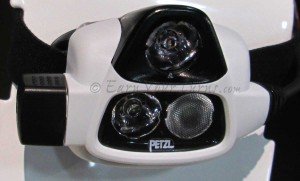
Petzl’s NAO has 5 light modes, a fresnel lens for a smooth wide beam, rechargeable batteries, and Reactive Lighting for consistent illumination.
Princeton Tec keeps up with the Joneses and ups the ante by developing a consistent toggle sequence to all their new headlamps. This means you can shift to any illumination mode just by toggling the On button the correct number of times; you don’t need to reach each level by going sequentially from one to the next, an operation that can be annoying.
Black Diamond addresses the user interface with a touch membrane on the side that toggles between your high and low settings. To adjust the low setting you hold the top button down and it oscillates between high and low light. Release the button when it reaches the low value you like, then tap on the right side with your hand to switch to high, then back down again. Especially nice is that it responds to a gloved hand. You will probably still want to use a bare finger to turn it on or off, but at least quick adjustments won’t force you to take your gloves off.There are also some new entries in the headlamp arena, including Leatherman, but they still have a ways to catch up with current state of the art in headlamps. One company you might not expect, Energizer is joining the fray which does not bode well for specialty brands to dominate the mainstream consumer market.
By the numbers Energizer’s Pro headlamp has the same luminosity as many other brands, but for less. It offers a single, high power LED with a reflector to deliver 160 lumens of spot light, or an array of four lower power LED’s for a wide illumination pattern. It runs on 3 AAA batteries, and only costs about $50. Probably a good choice if you’re on a tight budget, but only if it lasts longer than a few sets of batteries.
Overall the Pro impressed me more as a me-too headlamp, not something breaking new ground. On the otherhand, their Folding Lantern with 300 lumens of light energy was a bright spot in an otherwise dull category of mediocre illumination. Most LED lights for car camping deliver a diffuse beam of light that fails to brighten the surroundings much, even though they claim to do so. Yet, when you look at the source, it is so intense it blinds you. The Folding Lantern overcomes this flawed use of light energy via Light Fusion technology which effectively diffuses the light through a lens that resembles a fluorescent light fixture. LED’s line the sides of a panel, beaming their light down channels in a lens which refracts the waves throughout the surface creating a wide, flat light source that delivers a smooth, wide beam of light. It doesn’t radiate far, but everything near is well lit, without the source being a blinding point source, but a soft one instead. This is definitely worth having for weekends with the Coleman stove and sun shower. While it is great to see all these lights dropping in price while getting brighter, the pervasive use of plastic is a concern. Mind you, I’m not advocating for metal bodies, except maybe in critical zones. My old standby headlamps have both experienced debilitating injuries to the plastic case either rendering them useless, or crippled. Twice my Princeton Tec Apex cracked when accidentally dropped to the ground from less than four feet. The lifetime warranty came in handy, but it meant resorting to a subtitute while being replaced through the mail. There are worse fates, but when you become co-dependent on a headlamp 365 days a year, as I have, you just have to suck it up and have a spare. Spares come in handy when you misplace your main light anyway.When the plastic latch on my Petzl Tikka XP cracked off I knew I could send it in for a repair or replacement as well. Except I’ve grown so attached (literally) to its smooth, evenly distributed wide beam light while hunting for missing thing-a-ma-bobs, reading in bed, or walking the dog that I decided a piece of tape to hold the back panel shut was preferable to absence. Though the tape may need to be replaced periodically, it’s an easy cure with a known life expectancy and fast replacement.
Besides, that’s just a good excuse to see what is new out there in the headlamp world. My guess is the lumens will not necessarily win the day, but lenses, functional simplicity and durability will.
© 2013
Related Posts:
Review: Princeton Tec’s Apex Pro
Review: Petzl’s Tikka XP Core

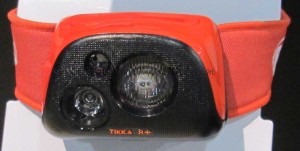
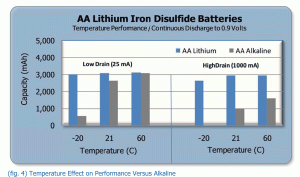
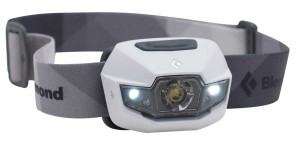
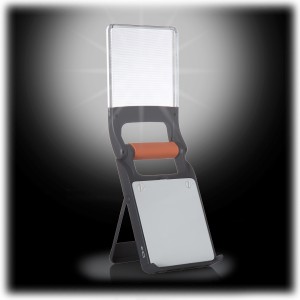
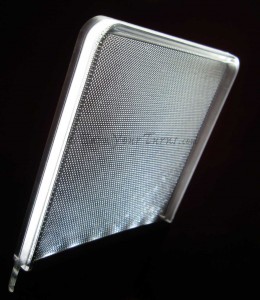
Recent Comments